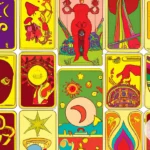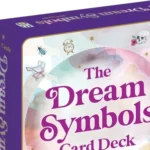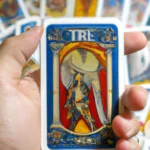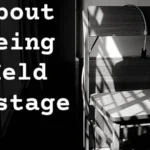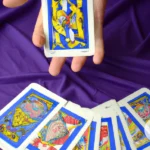As we delve into the fascinating history of the Renaissance period in Italy, we cannot ignore the role that Tarot played in shaping the cultural and intellectual landscape. Tarot, with its mystical symbols and esoteric meanings, captured the imagination of not only the common people but also the elite and intellectuals of the time. The origins of Tarot are obscure, with some theories tracing its roots to ancient Egypt or Asia, while others credit its invention to Italian artisans. In this article, we will explore the origins of Tarot, its connection to Christianity, the various types of Tarot decks used in Renaissance Italy, and its impact on art, alchemy, and astrology. We will also examine the relevance of Tarot in modern times and its continued use as a tool for personal insight. So grab your cards and let us embark on a journey into the mystical and enigmatic world of Renaissance Italy.
The Origins of Tarot
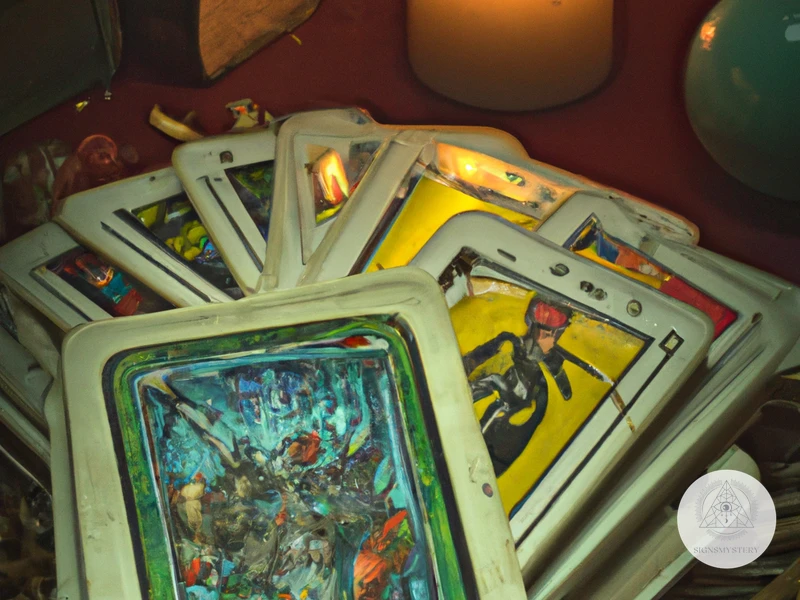
As we try to uncover the mysterious past of Tarot, the origins of this intriguing divination tool are still shrouded in mystery and speculation. Some historians believe that the roots of Tarot can be traced back to ancient Egypt, while others argue that the cards evolved from a standard deck of playing cards in Renaissance Europe. Despite the lack of consensus on their origins, Tarot cards continue to captivate our imagination and intrigue us with their symbolism and wisdom. In this section, we will explore the various theories and debates that surround the origins of Tarot, its evolution over time, and its symbolism. For more on the history of Tarot in Egypt, check out our article on the subject.
Origins of Tarot in Italy
The origins of tarot are shrouded in mystery and intrigue, and tracing the **origins of tarot in Italy** is no exception. There is no clear consensus on where or how tarot cards came to be used in Italy, but historians and scholars have proposed several theories.
One theory suggests that the cards were brought to Italy by traveling vagabonds or gypsies, also known as Romani people. These nomadic individuals were believed to have practiced divination using simple playing cards, and some believe that tarot cards evolved from this practice. Another theory suggests that tarot cards were created by Italian aristocracy as a game to be played at court.
Despite the lack of a clear origin story, it is widely accepted that tarot cards first emerged in Italy during the 14th century. The earliest recorded tarot decks were created for wealthy patrons and were hand-painted, making them incredibly valuable and exclusive.
Over time, tarot cards became more widely available as advances in printing technology allowed for collections of cards to be produced more easily. As they became more commonplace, tarot cards began to take on a new purpose beyond just gaming. Instead, they started to be used for divination and fortune-telling, a practice that continues to this day.
While the origins of tarot in Italy may remain mysterious, the impact of these cards on Italian culture and beyond is undeniable. As tarot evolved and spread beyond Italy, it became a powerful tool for understanding the mysteries of the universe and exploring spirituality. Today, the legacy of tarot in Renaissance Italy lives on through the continued use of tarot cards around the world.
Tarot and Christianity
Tarot and Christianity have had a complex relationship over the centuries. The Catholic Church has often viewed tarot cards as a form of divination and therefore, a threat to the Church’s authority. This has led to periods of persecution for tarot users and card makers, as well as attempts to suppress the use of tarot for religious purposes. However, despite the Church’s disapproval, the tarot has continued to be used throughout history, including in Renaissance Italy.
During the Renaissance, many tarot decks were created for noble families and the wealthy elite, and were often commissioned by members of the Church. It is thought that many of these decks were made specifically for devotional purposes, and that the tarot cards were seen as a means of communicating with the divine. The tarot’s imagery drew heavily on Judeo-Christian symbolism, with cards such as The Pope (also known as The Hierophant) and The Devil (also known as The Tempter) reflecting the influence of the Church.
Despite this, there were still many who saw the tarot as a tool for divination and used it to predict the future or gain insight into their lives. This led to the tarot being outlawed by the Church in many places, and many tarot users faced persecution, including being accused of witchcraft. However, this did not stop the popularity of the tarot, and it continued to be used both for religious and divinatory purposes.
Today, there is still a debate about the relationship between tarot and Christianity. Some Christians view the tarot as incompatible with their beliefs, while others see it as a way of connecting with God or gaining insight into their faith. Regardless of one’s beliefs, it is fascinating to explore the ways in which the tarot has been used throughout history, both for religious and divinatory purposes.
Want to learn more about the evolution of tarot? Check out our Evolution of Tarot article for a comprehensive look at the history of the tarot from its mysterious origins to its modern-day use.
The Types of Tarot Decks Used in Renaissance Italy
During the Renaissance period in Italy, tarot cards were used for various purposes such as playing games, divination, and meditation. There were several types of tarot decks used in Renaissance Italy, with different numbers of cards and varying artwork.
One of the oldest and most well-known types of tarot deck used during the Renaissance was the Visconti-Sforza deck. This deck was created for the Duke of Milan in the 15th century and consisted of 78 cards, including the 22 major arcana cards that represent powerful archetypes that are still used in many modern tarot decks today.
Another popular tarot deck used during the Renaissance era was the Tarot of Marseille, which was created in France but was also widely used in Italy. This deck was known for its simple yet symbolic artwork and consisted of 78 cards that were divided into four suits: cups, swords, pentacles, and wands. Each suit represented a different aspect of life, such as emotions, intellect, finance, and career.
In addition to the Visconti-Sforza and Tarot of Marseille, there were also other types of tarot decks used in Renaissance Italy that included unique symbols and artwork. For example, the Sola-Busca tarot featured intricate and detailed illustrations that were heavily influenced by the Renaissance art style.
It’s worth noting that tarot decks were not widely available to the general public during the Renaissance period due to restrictions by the Catholic Church. However, the nobility and wealthy individuals were able to access and use them freely, which led to the development of various tarot traditions and practices.
The types of tarot decks used during Renaissance Italy were diverse and reflected the artistic and cultural influences of the time. Today, many of these decks are still admired for their intricate artwork and symbolism, and have continued to inspire artists and mystics alike.
Tarot and Renaissance Culture
As we delve deeper into the history of Tarot, it becomes increasingly evident that the cards not only played a significant role in divination but were also highly important in Renaissance culture. The use of Tarot in courtly life, art, alchemy, and astrology added a layer of intrigue and mystique that still captivates people today. From its mysterious origins to its impact on spirituality, there is no doubt that Tarot is much more than a simple deck of cards. Let us explore the fascinating history of Tarot’s role in Renaissance Italy and its enduring influence on modern society. If you want to learn more about the origins of Tarot, you can check our previous articles about the major arcana and Tarot suits, and if you are interested in the occult influence of Tarot, you can read about hermeticism and the occult connection.
How Tarot Was Used in Courtly Life
During the Renaissance in Italy, tarot was not only used for divination, but it also had a place in courtly life. Nobles and members of the court would use tarot as a form of entertainment and a way to pass the time. They often commissioned luxurious and ornate decks for their personal use, as a symbol of their wealth and status.
One of the ways tarot was used in courtly life was for gambling. The cards were shuffled and dealt, and players would bet on the outcome of the game. In fact, tarot was so popular as a form of gambling that in some areas, it was banned.
However, tarot was not always used for frivolous pursuits. Some used it as a tool for self-reflection and introspection. They believed that the images on the cards could provide insight into their own lives and struggles.
Tarot also played a role in political intrigue. It was not uncommon for courtiers to use tarot to gain insight into their political enemies or to divine the outcome of political events. It was believed that a skilled tarot reader could use the cards to uncover secrets and hidden motives.
Tarot was often consulted during diplomatic negotiations. A skilled reader could use the cards to predict the outcome of negotiations or to gauge the intentions of foreign delegates.
Tarot had a significant place in courtly life during the Renaissance in Italy. It was used for both entertainment and personal insight, as well as for political and diplomatic purposes. Today, tarot continues to be a popular form of divination and self-reflection, with a rich history that stretches back centuries.
The Role of Tarot Among Artists
Artists in Renaissance Italy were fascinated with Tarot and its mystical symbolism. The use of Tarot among artists was popular because it provided them with a source of inspiration and guidance in their creative endeavors. It allowed them to express complex ideas and themes in a way that was both accessible and intriguing to their audiences.
Some of the most famous Italian artists of the Renaissance were known to use tarot cards, including Sandro Botticelli, who painted The Birth of Venus, which has been compared to The Lovers card in tarot. Additionally, Michelangelo was believed to have consulted tarot cards when seeking guidance for his work on the ceiling of the Sistine Chapel.
Artists were also drawn to tarot because it allowed them to explore different themes and emotions through the various cards. For example, The Magician card could represent the idea of mastery and control, while The Fool card was often seen as a symbol of innocence and potential. This allowed artists to explore different aspects of their own personalities and the human experience more broadly.
Tarot served as a source of inspiration for artists who drew upon the rich symbolism and imagery when creating their artworks. Many Renaissance paintings and sculptures incorporated elements from tarot cards, such as animals, celestial bodies, and various symbols representing different elements of life.
The role of tarot among artists in Renaissance Italy was multifaceted and complex. Tarot provided spiritual guidance and inspiration to artists in their creative pursuits, and it allowed them to explore complex themes and emotions in a way that was accessible to their audiences. The impact of tarot on Renaissance art was significant, and it continues to influence artists around the world today.
Link: To learn more about Tarot’s journey through Europe and the world, click here.
The Use of Tarot in Alchemy and Astrology
The use of tarot in alchemy and astrology was prevalent during Renaissance Italy. Tarot cards were believed to have mystical and spiritual powers and were used by alchemists and astrologers to gain insight into the mysteries of the universe.
Alchemy and Tarot
Alchemy was a popular pursuit in Renaissance Italy, and tarot cards were used as tools for alchemists to gain insight into their experiments. The cards were believed
Subscribe to Our Newsletter
Sign up to receive the latest news and updates.
In fact, some tarot decks were specifically designed for use in alchemical studies, with images of alchemical symbols, planets, and mythical creatures. These decks were often called “Tarocchi alchemici” and were highly prized by alchemists for their mystical properties.
Astrology and Tarot
In Renaissance Italy, astrology was a highly respected science that was used to predict the future and gain insight into human behavior. Tarot cards were often used as a tool for astrologers to create horoscopes and gain insight into their clients’ lives.
The cards were believed to represent the planets, stars, and celestial forces that governed the universe. By using the cards in conjunction with astrological charts, astrologers were able to provide their clients with detailed insights into their personalities, life paths, and future prospects.
It’s worth noting that the use of tarot in alchemy and astrology was not limited to the Renaissance period. These practices continue to this day among those who believe in the power of tarot as a tool for spiritual and personal insight.
Link: For more information on the popularity of tarot in France during the 18th century, read our article on Tarot’s Popularity in France.
The Influence of Tarot Today
It is a wonder how a deck of cards, originally created for playing games, has found its way into the spiritual practices of modern times. Indeed, the influence of tarot has expanded beyond its historical use in Renaissance Italy to become a popular tool for personal insight and growth in today’s society. Many wonder how these humble cards, steeped in the history and culture of their birthplace, could have such a lasting impact on spirituality worldwide. Some believe that the symbolism and imagery used in tarot decks holds deep spiritual meaning, while others see it as a form of divination that allows for intuitive guidance. Nonetheless, tarot continues to fascinate people and remains a subject of study and interest for those seeking to understand its power and influence. As we explore the influence of tarot, it is important to recognize the link between the use of tarot in Renaissance Italy, and today’s modern spirituality. Link
Modern Tarot and Its Connections to Renaissance Italy
The Renaissance period has had a significant impact on Tarot practices and beliefs that are still relevant in modern times. The Tarot decks used in Renaissance Italy were not only the precursors of modern Tarot decks but they were also the product of the historical and cultural context of that era.
1. Evolution in design
Modern Tarot decks have evolved from those used in Renaissance Italy, but they continue to draw heavily on the symbolism and design principles of their predecessors. The main differences between the two are the addition of new cards and the development of a wider range of interpretations. The Rider-Waite-Smith Tarot is perhaps the most recognizable Tarot deck and is based on the designs of the Visconti-Sforza and Marseille Tarot decks from Renaissance Italy.
2. Connection to alchemy
The alchemical philosophies of the Renaissance have also had an impact on modern Tarot practices. The concept of personal transformation through spiritual and psychological development is central to both alchemy and the Tarot. The Tarot is often used as a tool for self-reflection, and the process of reading Tarot cards is seen as a means of self-exploration and personal evolution.
3. Influence on divination
Modern Tarot has become closely associated with divination, especially in the form of fortune-telling. However, the earliest Tarot decks were not designed for this purpose. The Tarot was originally used for parlor games and courtly entertainment. It was only in the late 18th and early 19th centuries that Tarot cards began to be used for divinatory purposes.
4. Popularity
Despite the changes in its purpose and history, Tarot has maintained its popularity over the years. Today, Tarot is used by people all over the world and its relevance continues to grow.
The connections between modern Tarot practices and Renaissance Italy are strong and far-reaching. From design elements, to alchemical philosophies, to divinatory practices, the impact of Renaissance Italy on the Tarot cannot be denied. It is a fascinating lens through which we can view both the historical context of the Tarot and its continued relevance as a means of self-reflection and personal insight.
Tarot’s Continued Role as a Tool for Personal Insight
Even in modern times, the tarot deck continues to be used as a tool for personal insight and reflection. People across the world, regardless of their cultural background, use tarot to gain a better understanding of their lives and the world around them. The individual cards of the tarot deck can be seen as archetypes that represent universal human experiences and emotions, and thus can provide a means for introspection and self-discovery.
One way tarot is used as a tool for personal insight is through self-guided readings. Individuals can use their own tarot deck to pull a card or a spread of cards to gain insight into a particular situation or question they may have about their life. The process of interpreting the cards and their meanings can aid in gaining a deeper understanding of their thoughts and feelings related to the situation at hand.
Tarot can also be used as a tool for therapeutic purposes. Many therapists have incorporated tarot into their practices as a way to facilitate the therapeutic process. Tarot can be used as a means for clients to express their emotions and experiences in a non-verbal manner, as well as providing a visual representation of their inner world.
Another way tarot is used for personal insight is through online communities and mobile applications. In recent years, there has been an increase in online tarot communities and mobile applications that offer tarot readings and explanations of the different tarot cards. These resources can be a helpful tool for individuals looking to gain insight and guidance, particularly if they do not have constant access to a physical tarot deck or a professional reader.
Regardless of how it is used, the continued popularity and relevance of tarot speaks to its enduring role in providing a means for personal insight and introspection. The tarot deck serves as a reminder of the deep connections between the past and the present, and how our shared human experiences continue to hold meaning and significance throughout time.
Conclusion
Reflecting on the role of tarot in Renaissance Italy, it is clear that it had a significant impact on the culture and beliefs of the time. From its origins as a simple playing card game to its use in courtly life, art, alchemy, and astrology, tarot became deeply intertwined with the spirituality of the era. Despite its association with paganism and the occult, tarot was able to thrive and adapt to the changing attitudes and beliefs of the Renaissance.
Today, tarot remains a fascinating subject for those interested in spirituality and personal insight. The influence of Renaissance Italy on the modern tarot is undeniable, with many of the same symbols and themes still present in contemporary decks. Tarot readings continue to offer individuals a means of exploring their innermost thoughts and feelings, and can provide valuable guidance and insights.
It is clear that the enduring legacy of tarot in Renaissance Italy is a testament to its power and significance as a cultural and spiritual artifact. Whether used for divination or simply as a means of artistic expression, tarot remains a rich and complex subject that continues to fascinate people around the world. Its enduring appeal is a testament to the timeless nature of spiritual symbolism, and the human desire to connect with something greater than ourselves.
Frequently Asked Questions
What is the purpose of Tarot?
The purpose of Tarot is to provide insights and guidance, as well as to help individuals navigate various aspects of their lives.
Are the origins of Tarot known?
The origins of Tarot are still a matter of debate among historians and experts, but it is believed to have originated in Italy in the 15th century.
How was Tarot used during the Renaissance?
Tarot was used in a variety of ways during the Renaissance, including as a tool for divination, in courtly life, among artists, and in alchemy and astrology.
What kinds of Tarot decks were used during the Renaissance in Italy?
During the Renaissance, a variety of Tarot decks were used, including the Visconti-Sforza, Marseille, and Rider-Waite decks.
What was the role of Tarot in courtly life during the Renaissance?
Tarot played a role in courtly life during the Renaissance as a form of entertainment, as well as a tool for divination and decision-making.
How did Tarot influence Renaissance art?
Tarot influenced Renaissance art by appearing in various works of art, including paintings, sculptures, and engravings, and inspiring artists to create their own Tarot decks.
What is the significance of Tarot in alchemy and astrology?
Tarot was seen as a tool for accessing metaphysical knowledge and communicating with spiritual entities, making it significant in both alchemy and astrology.
Is Tarot still used today?
Yes, Tarot is still widely used today as a tool for personal insight and guidance, as well as for divination and decision-making.
What is modern Tarot?
Modern Tarot refers to Tarot decks that have been created in recent years, often with themes and imagery that reflect contemporary culture and values.
How is modern Tarot connected to Renaissance Italy?
Modern Tarot is connected to Renaissance Italy through its roots in Italian Tarot decks, as well as its continued use of Tarot as a tool for divination and personal insight.



